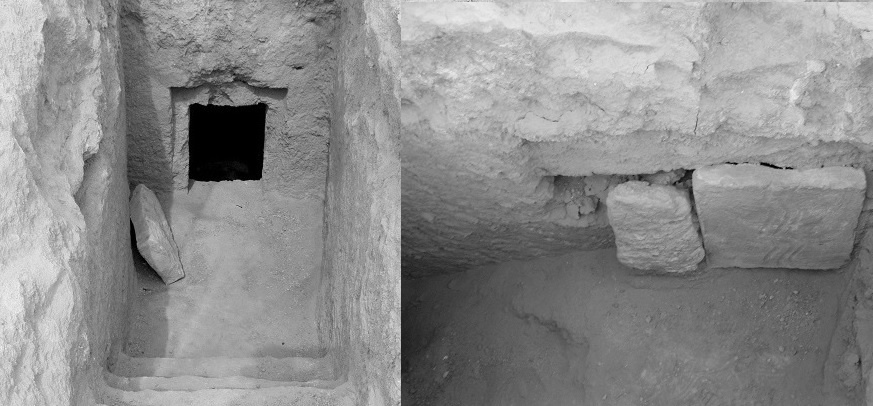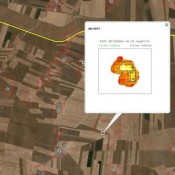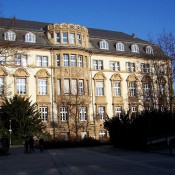A study published in the journal Bioarcheology of the Near East reveals the characteristics of the population that was buried in the Tell es-Sin necropolis, a Byzantine site dated between the 5th and 7th centuries that is located in Syria, on the left bank from the Euphrates River.
The main authors of the new anthropological work on this site are researchers Laura Martínez, from the Faculty of Biology at the University of Barcelona (UB), and Ferran Estebaranz Sánchez, from the Faculty of Biosciences at the Autonomous University of Barcelona (UAB).
Tooth Mount in Ancient Syria
The Tell es-Sin site – from the Arab, ‘Monte del Diente’ – occupies an area of twenty-five hectares located in the middle of a passage area for the ancient Byzantine and Persian Sassanid armies. It is divided into the acropolis, the lower city and the necropolis, which occupies seven hectares. It is located near the southeast of the current city of Deir ez-Zor – on the border between Syria and Iraq – and is considered a kastron, that is, an outpost with both administrative and military functions. The size of the site, its urban structure and its fortified nature suggest that it would be an old polis whose name is still unknown.
Tell es-Sin is one of the most important necropolis of the Fertile Crescent in the Middle East, “but very little is still known about it,” the authors note. The new work wants to deepen the knowledge of the populations of the border of the Byzantine Empire during the 6th and 7th centuries, a period of which the necropolis and skeletal remains are scarce.
A fortification in the middle of the military map of the Middle East
Mesopotamia was a strategic defensive region against both Persian and Arab incursions and invasions. In this context, Tell es-Sin could have been affected by the territorial and military reorganization carried out by Emperor Justinian, who promoted the fortification of the limes populations in the middle of the 6th century of our era, “explains Laura Martínez, professor at the Department of Evolutionary Biology, Ecology and Environmental Sciences of the Faculty of Biology and first author of the study.
The first archaeological excavations of the Byzantine necropolis of Tell as-Sin date from 1978 and were led by Asad Mahmoud, general director of Antiquities and Museums at Deir ez-Zor at the time. In 2005, the investigative work of the first Syrian-Spanish archaeological mission – coordinated by the University of La Coruña – in the area highlighted the importance of the necropolis of the Tell es-Sin site, which was part of the Diocletianus limes in the East along with those of Tell es-Kasr and Circesium (current city of Buseira). In total, experts have identified 170 hypogea in a necropolis that could contain up to 1,000 graves.
Byzantine tombs and archeology in Syrian territory
As Ferran Estebaranz Sánchez explains, “the samples from Tell es-Sin constitute a heterogeneous and biased set of skeletal remains that correspond to tombs looted during the course of time; Using traditional biometric methods, this anthropological study wanted to provide information on the sex, age of death, height and other morphological variables of the individuals found in the site.
The sample analyzed – only a small part of the total number of Tell es-Sin burials – includes human remains from ten hypogea excavated by the Syrian-Spanish mission. In total, a total of 71 individuals have been analyzed (at least eighteen would correspond to men and twelve to women).
According to experts, no bias regarding sex or age has been observed in the remains studied, and highlights the lack of children compared to other places (they could have been buried in other niches at the entrance to the tomb). Also, there are at least one to five individuals buried within each niche (the average is three bodies per niche, including subadults and adults), according to the typical collective burial model of ancient Syria.
Despite the fragmented state of the remains, the team was able to estimate the height of most individuals. “The estimated mean height from the long bones of the upper limb was 174.5 cm for men and 159.1 cm for women. These values are very similar to those estimated from the diameter of the head of the femur: 176.1 cm for male individuals and 164.5 cm for female individuals, “comments Estebaranz Sánchez.
“In conclusion,” he continues, “the estimated height for the Byzantine population of Tell es-Sin is similar to that of other contemporary Byzantine populations.”
About 25% of the individuals presented with orbitalia screening, and 8.5%, porotic hyperostosis, alterations of the cranial bones traditionally associated with anemia or iron deficiency, rickets, infection or other inflammatory conditions.
The prevalence of degenerative joint diseases was also low, the study points out. Regarding the dental sample, only 2.8% of the teeth had cavities, a value clearly lower than that of other contemporary Byzantine sites in the region that could be related to the low sample analyzed at the Tell es-Sin site.
Tell es-Sin: the end of a settlement with the arrival of Islam
The end of the Tell es-Sin seat – in the first quarter of the 7th century AD – coincided with the wars against the Sassanid Persians and the Arab tribes of Islam. Despite the conditions of the Tell es-Sin deposit and the current situation in the region – following the occupation by ISIS – the discovery and excavation of unsacked graves in the future is crucial to deepen the knowledge of this population.
“For this reason, we are currently analyzing the pattern of oral microstriation to be able to infer the diet of the population and thus complete the biocultural model of the border populations with the great empires of antiquity,” conclude Laura Martínez and Ferran Estebaranz Sánchez.




